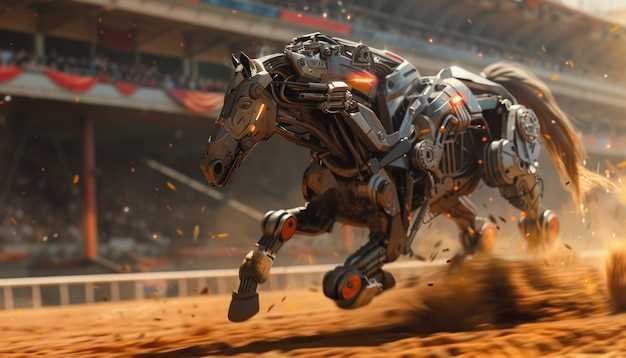
In the world of automotive performance, the debate between lightweight builds and high-horsepower setups is a topic that captivates enthusiasts and engineers alike. Both approaches aim to enhance vehicle dynamics and performance, yet they operate under distinctly different principles. Understanding the implications of weight versus power can help enthusiasts make informed decisions when building their ideal machine.
Lightweight builds emphasize reducing the overall weight of the vehicle, leading to improved acceleration, handling, and braking capabilities. The efficiency gained from a lighter frame allows for quicker responses, making these cars highly agile on the track or the road. Additionally, lower weight can contribute to better fuel economy and less wear on components, ultimately increasing the vehicle’s lifespan.
On the other hand, high-horsepower builds focus on maximizing engine output, pushing vehicles to achieve impressive speed and power. The allure of raw horsepower can be intoxicating, as it promises thrilling straight-line performance and exhilarating driving experiences. However, this approach often comes with its own set of challenges, including the need for robust drivetrain components to handle the increased strain and the potential for a less balanced vehicle dynamics due to higher weight.
Ultimately, the choice between lightweight and high-horsepower builds is not merely a matter of preference; it involves weighing various factors such as intended use, driving style, and personal goals. Each approach has its merits and drawbacks, making it essential for builders to analyze their priorities and the specific demands of their driving environment before embarking on their performance journey.
Lightweight vs High-Horsepower Builds: Which Is Better?

When discussing automotive performance, the choice between lightweight builds and high-horsepower configurations is a fundamental debate. Each approach offers distinct advantages and challenges that cater to different driving styles and preferences. The core consideration often revolves around the balance between weight and power.
Lightweight builds prioritize minimizing weight to enhance agility and responsiveness. A lighter vehicle can accelerate faster, handle better in corners, and achieve improved braking performance. Engineers often utilize materials such as carbon fiber, aluminum, or advanced composites to reduce the overall weight without sacrificing structural integrity. The reduced weight allows for better fuel efficiency, making lightweight builds ideal for those focused on track performance or spirited driving on winding roads.
On the other hand, high-horsepower builds focus on maximizing engine output. These configurations often rely on powerful engines, turbochargers, or superchargers to deliver exceptional acceleration and top speeds. While high horsepower can make a car exhilarating to drive straight-line, it can also lead to challenges in handling and weight distribution. High-horsepower vehicles tend to be heavier, which can affect cornering agility and braking efficiency.
Ultimately, the decision between lightweight and high-horsepower builds depends on individual preferences and intended use. Lightweight builds are favored by those who seek track-ready performance and agile handling, while high-horsepower builds appeal to those who crave raw power and speed. Each option presents a unique driving experience, and the best choice will depend on the driver’s goals, whether that be competitive racing, casual cruising, or a blend of both.
Optimizing Performance: The Advantages of Lightweight Builds
Lightweight builds are becoming increasingly popular in automotive design, particularly among performance enthusiasts. Reducing vehicle weight can significantly enhance speed, handling, and overall driving experience. Here are some advantages of opting for a lightweight build:
- Improved Acceleration: A lighter vehicle can accelerate faster due to less weight needing to be moved. This allows for quicker response times and a more exhilarating driving experience.
- Enhanced Fuel Efficiency: With reduced weight, engines work less to propel the vehicle. This leads to better fuel economy, making lightweight builds not only faster but also more economical over time.
- Better Handling: Lower weight contributes to improved handling dynamics. Vehicles with reduced weight exhibit better cornering abilities, as they can maintain traction and stability more effectively during turns.
- Increased Braking Performance: Less weight means that brakes have to work less hard to slow down or stop the vehicle. This can lead to shorter stopping distances and reduced brake wear.
- Rider and Cargo Capacity: A lightweight build allows for more flexibility in adding modifications or carrying cargo without exceeding weight limits, thus enhancing usability.
Overall, while high-horsepower builds appeal to many, lightweight builds offer a distinctive advantage by enhancing performance through weight reduction. This optimization leads to an improved overall driving experience and greater efficiency on the road.
Maximizing Power: The Benefits of High-Horsepower Engines

High-horsepower engines are often synonymous with performance and capability. One of the primary advantages of these powerful engines is their ability to deliver impressive acceleration and speed. With greater horsepower, vehicles can achieve higher top speeds and accelerate more quickly from a standstill, making them ideal for both racing and everyday driving experiences.
Another significant benefit of high-horsepower engines is the improved towing capacity. For those who require a vehicle capable of hauling heavy loads, high-horsepower engines provide the necessary torque to manage trailers, boats, or other heavy equipment efficiently. This capability is essential for truck enthusiasts and professionals who rely on their vehicles for work.
High-horsepower engines also enhance driving dynamics. Increased horsepower allows for better handling and stability at high speeds. This improved performance can be particularly advantageous in various driving conditions, such as competitive racing or off-road environments, where responsiveness and control are crucial.
Furthermore, advancements in engine technology have enabled high-horsepower engines to become more fuel-efficient. Manufacturers are continually developing turbocharging and supercharging techniques, allowing these powerful engines to extract maximum energy from fuel while maintaining reasonable consumption rates. This efficiency enhances the overall driving experience without sacrificing power.
Lastly, high-horsepower builds often contribute to the thrill of driving. The exhilaration that comes with the roar of a powerful engine and the rapid acceleration it offers is a significant draw for automotive enthusiasts. The combination of power and performance creates a captivating driving experience that lightweight builds may not always achieve.
Choosing the Right Build for Your Driving Style and Goals
When it comes to building a vehicle, the decision between lightweight and high-horsepower configurations is crucial. Each approach offers distinct advantages that cater to different driving experiences and objectives.
A lightweight build emphasizes agility and precision. Vehicles in this category tend to have improved handling, making them an excellent choice for enthusiasts who enjoy spirited driving on winding roads or track environments. The reduced weight allows for quicker acceleration, enhanced braking performance, and a more responsive feel behind the wheel. For those whose goals include competitive racing or autocross events, a lightweight setup can offer the edge necessary to outperform opponents.
On the other hand, high-horsepower builds focus on raw power and speed. These builds are ideal for straight-line performance, making them popular among drag racing enthusiasts. High horsepower can provide exhilarating acceleration, allowing for impressive quarter-mile times and thrilling top speeds. If your primary objective is to achieve maximum power and dominate drag strips, then investing in a high-horsepower build may be the way to go.
Choosing between these two approaches ultimately depends on your driving style and objectives. If you prioritize maneuverability and finesse, a lightweight build will likely suit you best. However, if you seek to harness immense power for straight-line thrills, a high-horsepower configuration is the better choice. Consider your goals carefully to ensure your build aligns with the driving experience you desire.






